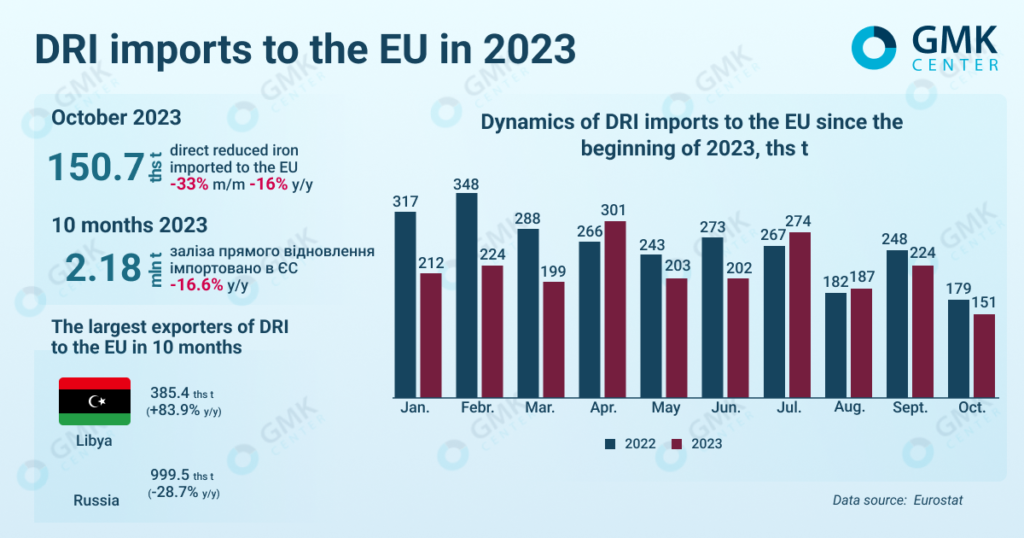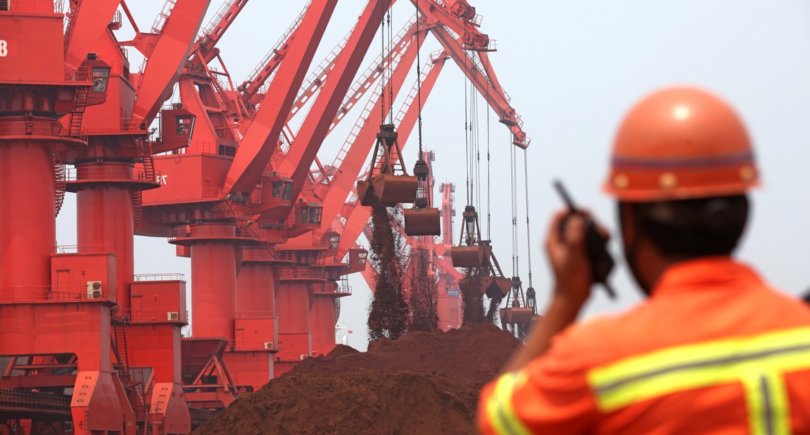
News Global Market EU 923 21 December 2023
The main volume of products was shipped from Russia and Libya – 999.51 thousand tons and 385.36 thousand tons, respectively
In January-October 2023, the European Union reduced imports of direct reduced iron (DRI) by 16.6% compared to the same period in 2022, to 2.18 million tons. This is evidenced by Eurostat data.
In October 2023, the volume of DRI supplies to European consumers fell by 33% compared to September 2023, and decreased by 16% by October 2022 – to 150.74 thousand tons. October imports are the lowest in at least two years.
In January-October, the main importers of direct reduced iron among the EU countries were Italy, Germany, Belgium, Spain and Austria, among others:
- Italy – 722.82 thousand tons (-12.6% y/y);
- Germany – 557.95 thousand tons (-4.3% y/y);
- Belgium – 258.24 thousand tons (+3.5% y/y);
- Spain – 199.03 thousand tons (-10.1% y/y);
- Austria – 162.36 thousand tons (-11.3% y/y).
Russia is the largest supplier of DRI to the European Union. In January-October 2023, Russian enterprises shipped 999.51 kt of direct reduced iron to European consumers, down 28.7% compared to the same period in 2022. In October, the EU imported 44.1 thousand tons of the relevant products from Russia (-3.8% y/y, -44.5% m/m).
The main importer of Russian products is Italy – 564.1 thsd tonnes, down 21.7% y/y. Belgium ranks second with 205.6 thsd tonnes (-17.6% y/y).
In January-October, Libya shipped 385.36 thousand tons of DRI to the EU, up 83.9% y/y. In October, European steelmakers imported 19.4 kt of direct reduced iron from Libya (-36.1% y/y, -62.7% m/m).

As GMK Center reported earlier, the European Union in January-September 2023 reduced imports of steel raw materials from Russia by 39% compared to the same period in 2022 – to 3.94 million tons. Import costs decreased by 39% y/y – to €1.97 billion.




